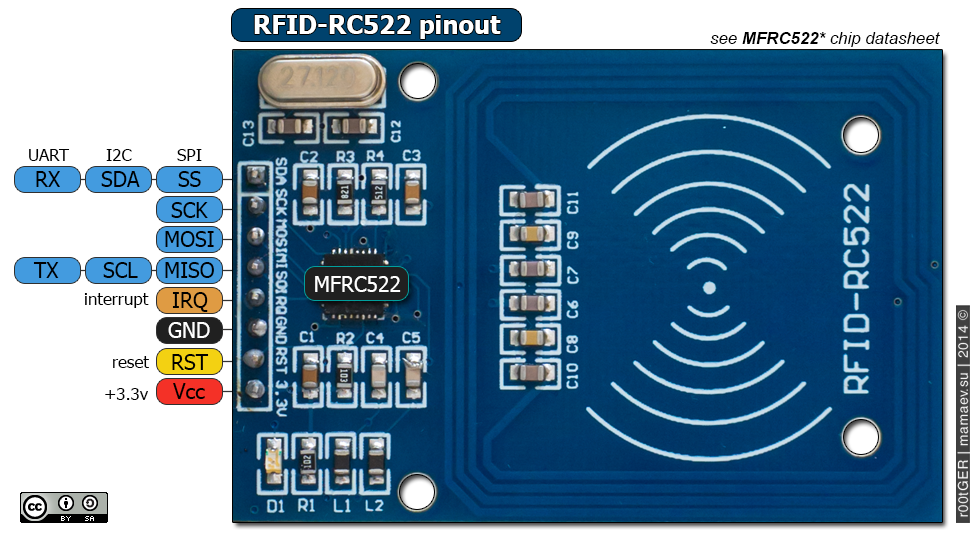 convert RFID Tag Data into keystrokes by emulating a USB Keyboard on a Pi Pico, including leave-events.
convert RFID Tag Data into keystrokes by emulating a USB Keyboard on a Pi Pico, including leave-events.
It can read and write tag data, but currently only checks if the tag UID exists in a JSON file.
This Project could easily be used to build a Sound Toy that works similar to the popular Toniebox®.
- Raspberry Pi Pico (RP2040) with CircuitPython 9.x
- MFRC522-based RFID reader using SPI
- Mifare Classic 1k Tags
- optional LED: NeoPixel (WS2812) or APA106 (WS2811)
RFID Class for MFRC522 is based on domdfcoding/circuitpython-mfrc522 (CircuitPython port),
forked from wendlers/micropython-mfrc522 (MicroPython port).
| MFRC522 | Pico GPIO |
|---|---|
| sck | GP06 |
| mosi | GP07 |
| miso | GP04 |
| rst | GP08 |
| cs/sda | GP05 |
Write Access for Pico is enabled by grounding Pin GP02 to mass. This sets the USB-filesystem to read-only, allowing Pico to write to it's own memory.
Handled by boot.py at boot time as described here.
| extra pins | Pico GPIO |
|---|---|
| NeoPixel (PWM) | GP00 |
| write Access | GP02 |
APA106 LED is driven by Adafruit CircuitPython library as described here
and wired like this:

image source
USB-HID utilizes CircuitPython HID library which can emulate Keyboard and Mouse as described here or here.
Copy code.py, boot.py, known_tags.json and the lib/ directory with all it's content (mfrc.py class and adafruit libraries) to the root of Pico's File System.
